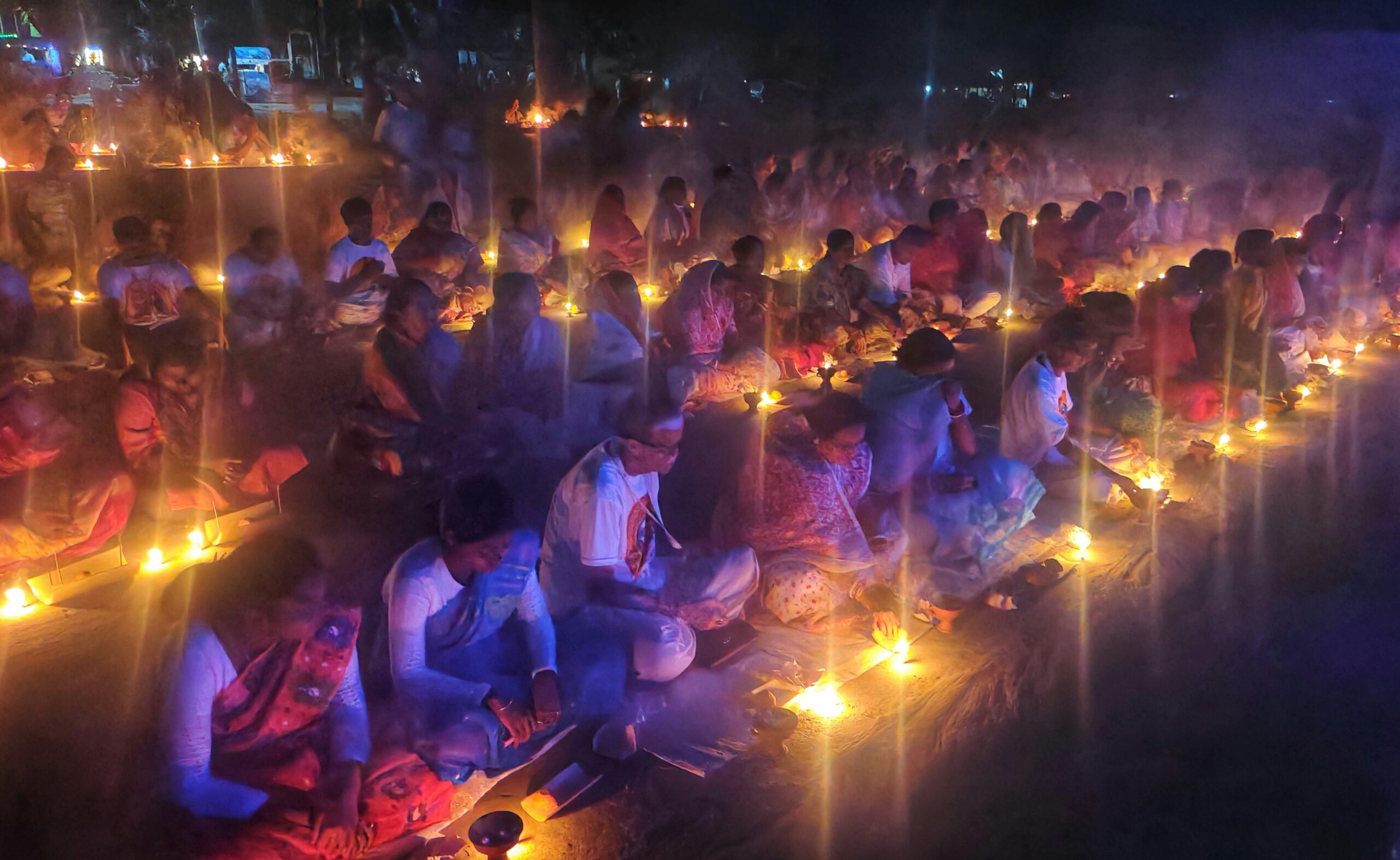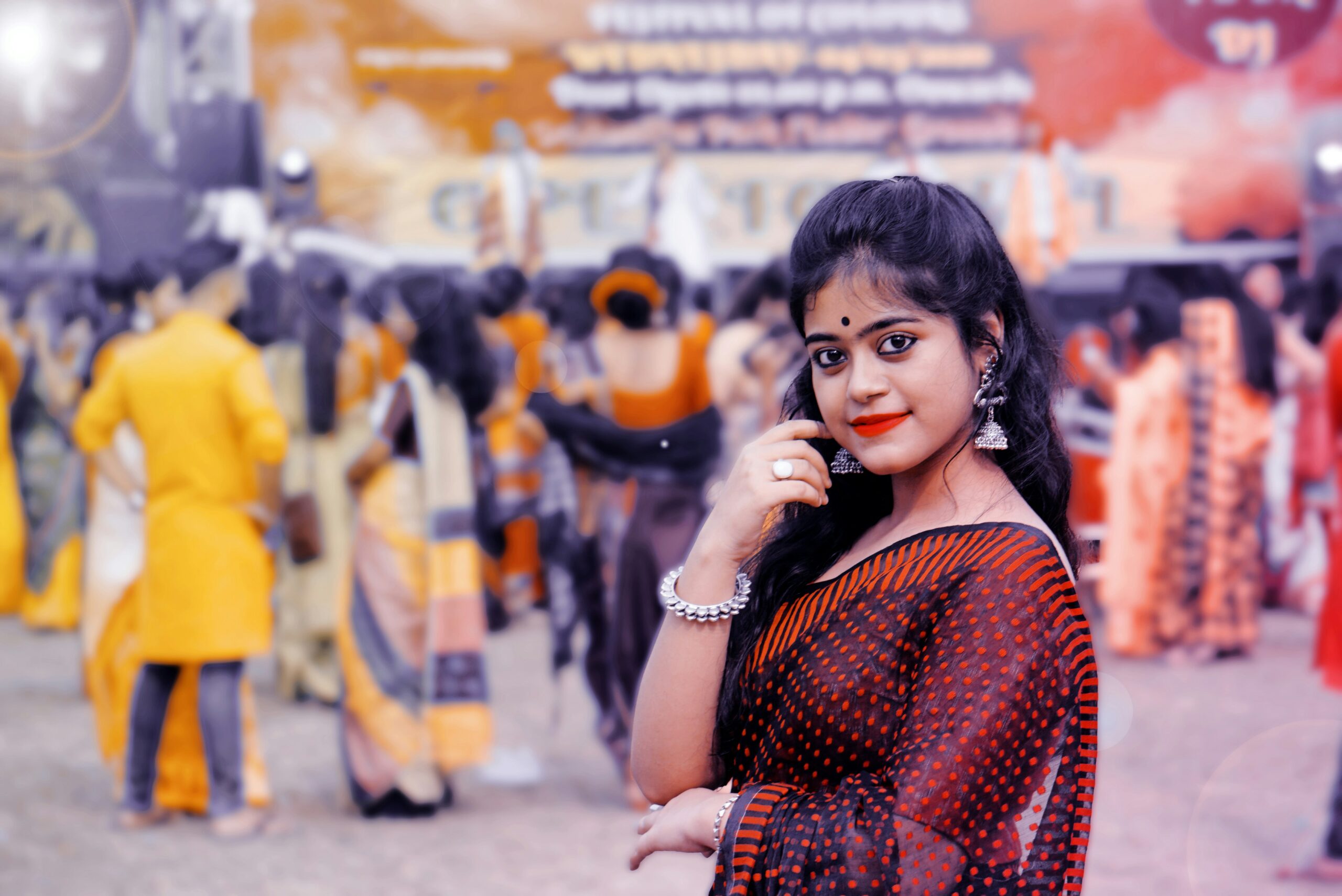Introduction to Bengali Kurtas
Bengali kurtas have long been an integral part of men’s traditional attire, deeply intertwined with the rich cultural tapestry of Bengal. These garments, characterized by their unique designs and comfortable fit, are a symbol of both heritage and contemporary fashion. Dating back centuries, the kurta serves not merely as clothing but as a representation of Bengali identity; its evolution reflects the blending of tradition with modernity, making it a versatile choice for various occasions.
The traditional Bengali kurta is distinguished by its loose silhouette and often features intricate embroidery and embellishments that reflect the vibrant culture of the region. Typically made from breathable fabrics such as cotton or linen, these kurtas are suitable for the humid climate of Bengal, providing comfort while exuding elegance. The colors and patterns may vary, showcasing regional diversity and personal expression, from earthy tones to vivid shades, often inspired by nature and local art forms.
Cultural significance is a key aspect of Bengali kurtas. They are worn during significant celebrations such as festivals, weddings, and religious events, making them a staple in the attire of many Bengali men. The kurta not only represents personal style but also conveys a sense of belonging to a community that cherishes its customs and traditions. Over time, the kurta has adapted to modern trends while maintaining its essence, resulting in a fusion of classic and contemporary styles that appeal to younger generations.
Understanding the deep-rooted history and cultural importance of Bengali kurtas provides insight into their timeless appeal. These garments serve as a celebration of Bengali heritage while continuing to evolve, ensuring their relevance in today’s fashion landscape.
Types of Bengali Kurtas
Bengali kurtas have long been a staple in men’s apparel, embodying both cultural heritage and contemporary style. Among the various types, half-sleeve kurtas stand out for their practicality and comfort. These kurtas typically feature a relaxed silhouette, making them an ideal choice for warm-weather occasions. Often paired with casual trousers or jeans, half-sleeve kurtas strike a perfect balance between form and function, offering versatility suitable for any informal gathering.
On the other hand, full-sleeve kurtas exhibit a more traditional aesthetic. These kurtas provide a polished look, often adorned with intricate embroidery or embellishments along the neckline and cuffs. Suitable for formal events, full-sleeve options can be crafted from various materials, ranging from cotton for everyday wear to silk for festive occasions. Their classic design allows them to be easily matched with churidars or pajama pants, making them an essential part of any man’s wardrobe.
Another popular style is the straight-cut kurta, which offers a contemporary silhouette. Characterized by its linear design, this type emphasizes simplicity and elegance, making it ideal for both urban settings and traditional festivities. Complemented by subtle design elements, straight-cut kurtas provide an understated sophistication while remaining comfortable and easy to wear.
Asymmetrical designs are gaining traction among fashion-forward individuals, blending traditional forms with modern sensibilities. Featuring unique hem lengths and innovative cuts, these kurtas create a striking visual impression. Whether paired with jeans for a casual look or tailored trousers for a semi-formal appearance, asymmetrical kurtas allow men to express their individuality while honoring their cultural roots.
Each of these styles contributes to the diverse landscape of Bengali kurtas for men, catering to different personal tastes and occasions. From half-sleeve to full-sleeve, straight-cut, and asymmetrical variations, there is a kurta that suits every preference and event.
Fabrics Used in Bengali Kurtas
Bengali kurtas have become a staple in men’s traditional wear, not only for their aesthetic appeal but also for the variety of fabrics used in their making. Each fabric brings unique characteristics that enhance both comfort and style, making Bengali kurtas suitable for numerous occasions and seasons.
Cotton is one of the most popular materials for Bengali kurtas, praised for its lightweight nature and breathability. Ideal for the hot and humid climate of West Bengal, cotton kurtas provide exceptional comfort, allowing for ease of movement. They are available in a variety of colors and patterns, making them versatile for casual outings or festive celebrations.
Silk, on the other hand, adds a touch of luxury and elegance to Bengali kurtas. This fabric is often reserved for special occasions, such as weddings and festivals. Silk kurtas are not only visually appealing due to their sheen and rich textures but are also comfortable to wear. They blend style with a sense of grandeur, making the wearer stand out during any festive gathering.
Linen is gaining popularity as another fabric option for Bengali kurtas. Known for its durability and breathability, linen is perfect for warmer climates. Its natural fibers allow for excellent airflow, making it an ideal choice for summer wear. Furthermore, linen drapes beautifully, providing a refined look that is both casual and sophisticated.
Finally, khadi, a handspun fabric, holds cultural significance in Bengali apparel. It is eco-friendly and embodies the spirit of sustainability. Khadi kurtas not only support the local economy but also provide excellent comfort, especially in the summer months. The texture of khadi adds a rustic charm, making each piece unique. The choice of fabric plays a crucial role in ensuring that Bengali kurtas remain a timeless and stylish option for men across various seasons.
The Art of Embroidery and Prints
Bengali kurtas for men are not just garments; they are a canvas showcasing the rich cultural heritage and craftsmanship of Bengal. The intricate embroidery styles and sophisticated prints play a pivotal role in enhancing the visual appeal of these traditional attires. One of the most prominent embroidery techniques used in Bengali kurtas is Kantha, a form of hand-stitched embroidery that transforms simple fabric into exquisite works of art. Kantha stitches are characterized by their simplistic yet mesmerizing patterns, often depicting flora and fauna that resonate with the natural beauty of Bengal.
Block printing is another traditional embellishment that elevates the aesthetic of Bengali kurtas. This technique involves carved wooden blocks that are dipped in dye and stamped onto the fabric, resulting in vibrant patterns that are both unique and captivating. The artistry involved in block printing reflects the painstaking effort of artisans who dedicate their skills to preserving this age-old craft. Typically, bold colors and intricate designs are prevalent, which ultimately contribute to the vibrancy and diversity seen in Bengali kurtas.
The combination of Kantha embroidery and block printing not only enhances the visual grandeur of the kurta but also adds texture and depth, making each piece distinct. The interplay of these artistic elements allows for personalization, so each kurta tells its own story. Beyond aesthetics, these traditional techniques are a testament to the cultural significance of Bengali fashion, as they embody the legacy and craftsmanship that have been passed down through generations. Thus, the art of embroidery and prints plays an integral role not only in the appearance but also in the cultural richness of Bengali kurtas for men.
Choosing the Right Bengali Kurta
When it comes to selecting the right Bengali kurta, understanding the occasion is paramount. Different events call for varying styles, fabrics, and patterns, making the right choice a crucial aspect of your wardrobe. For festivals such as Durga Puja or Poila Baisakh, vibrant colors and intricate designs are ideal. Look for kurtas adorned with traditional motifs or bold prints that celebrate the festive spirit.
In contrast, for weddings, consider opting for silk or brocade kurtas that exude elegance. Rich colors like deep red, royal blue, or emerald green can add sophistication to your attire. Moreover, the fit plays a significant role—ensure that the kurta is tailored to complement your physique, providing both comfort and style. Pairing these kurtas with churidar or dhoti pants often creates a refined look, while a simple shawl can enhance the ensemble, lending an air of sophistication.
Casual gatherings permit a more relaxed approach. Lightweight cotton kurtas in subtle shades or whimsical patterns can provide a smart yet comfortable look. Pairing these with jeans or chinos can strike a balance between traditional and contemporary styles, making it perfect for less formal settings.
Accessories also play a vital role in completing your look. A well-chosen watch or traditional juttis can elevate your kurta outfit, making you appear well put together. Additionally, donning a matching scarf or selecting complementary colors in your outfit can create a visually appealing aesthetic. Ultimately, choosing the right Bengali kurta not only enhances your appearance but reflects your personal sense of style and occasion-appropriateness, making it a timeless addition to your wardrobe.
Caring for Your Bengali Kurta
Maintaining the aesthetic appeal and integrity of your Bengali kurtas is crucial for their longevity. These traditional garments are often crafted from delicate fabrics such as cotton, silk, or linen, each requiring specific care techniques. To preserve the quality and vibrancy of your kurta, it is essential to adopt appropriate washing methods. For cotton and linen kurtas, hand washing in cold water with mild detergent is recommended to avoid wear and tear. If machine washing is necessary, select a gentle cycle and use a laundry bag to protect the fabric from friction with other items.
Silk kurtas, on the other hand, require more specialized care. It is advisable to dry clean silk garments to maintain their luster and shape. If you prefer washing at home, use a very gentle approach—always wash in cold water and avoid wringing the fabric. Furthermore, to keep the colors vibrant, refrain from soaking and always wash dark colors separately.
After washing, proper drying methods can significantly impact the duration of your kurta’s life. It is best to air dry your kurtas away from direct sunlight, as harsh UV rays can lead to fading. When storing your Bengali kurtas, opt for breathable cotton garment bags or wrap them in muslin cloth to prevent moisture accumulation and dust accumulation. Additionally, fold the kurtas neatly to avoid creasing, and ensure they are completely dry before storing.
Stains can occasionally occur, but prompt action can often prevent permanent marks. For common stains such as food or oil, treat the affected area immediately with cold water and a gentle soap, or consider spot cleaning with a stain remover formulated for the fabric type. Always test any chemical cleaning agent on a small, inconspicuous area of the fabric first.
By adhering to these care guidelines, you can ensure that your Bengali kurtas retain their elegance and continue to be a cherished part of your wardrobe for years to come.
Bengali Kurtas in Modern Fashion
Bengali kurtas have significantly evolved from their traditional roots, finding a prominent place in the realm of contemporary men’s fashion. Historically cherished for their unique designs and comfort, these garments have now been reimagined by modern designers, blending cultural heritage with contemporary aesthetics. This adaptation has contributed to their growing popularity beyond the geographic confines of Bengal, establishing them as a staple in wardrobes across the globe.
The resurgence of interest in ethnic wear among men is partly attributable to the increasing fusion of traditional and modern styles. Designers are now experimenting with cuts, fabrics, and patterns, resulting in variations that appeal to younger generations. The straightforward elegance of Bengali kurtas makes them an ideal choice for various occasions, from casual gatherings to semi-formal events. The combination of traditional craft and modern styling elements enhances their versatility, allowing them to seamlessly integrate into everyday fashion.
Moreover, international fashion shows and collaborations with designers from different backgrounds have further popularized Bengali kurtas. Influential figures in fashion can often be seen donning these garments, which has elevated their status in global fashion circles. By incorporating intricate embroideries, handloom fabrics, and contemporary silhouettes, designers ensure that Bengali kurtas cater not only to consumers’ aesthetic preferences but also to their desire for sustainability and authenticity.
This evolving narrative around Bengali kurtas is reflective of a broader trend within fashion—one that values inclusivity and cultural appreciation. As they continue to be embraced by modern fashion enthusiasts, these kurtas stand testament to the fact that traditional clothing can remain relevant and stylish, resonating with a diverse audience while still celebrating their rich heritage.
Popular Brands and Where to Buy
Bengali kurtas have gained immense popularity not only in Bengal but across various regions, thanks to their unique styles and comfort. A plethora of brands specializes in this timeless attire, catering to diverse tastes and budgets. Some of the most renowned brands include **Raymond**, **Manyavar**, and **Fabindia**, each known for their distinctive take on traditional designs infused with contemporary elements.
**Raymond**, a leader in the textile and apparel sector, offers a range of high-quality kurtas crafted from premium fabrics. Their collection often features intricate patterns and vibrant colors, making them suitable for both festive occasions and casual gatherings. On the other hand, **Manyavar** emphasizes ethnic wear and provides an array of elegant options. Their kurtas often include exquisite embroidery, appealing to those who desire a blend of traditional craftsmanship with modern aesthetics.
**Fabindia**, known for promoting Indian handicrafts, provides kurtas that are not only stylish but also sustainable. Their commitment to traditional Indian textiles ensures that customers receive high-quality products while supporting local artisans. These brands reflect the diversity present in Bengali kurta designs and can be found in major cities, with dedicated outlets and showrooms.
For those preferring the convenience of online shopping, websites such as **Amazon**, **Myntra**, and **Tata Cliq** also provide extensive collections of Bengali kurtas. They often feature user reviews, helping potential buyers make informed choices about quality and sizing. Prices may vary depending on the brand and the materials used, typically ranging from affordable to premium categories.
In summary, whether you choose to shop in-store or online, various options are available to acquire authentic Bengali kurtas, ensuring that you find the perfect piece to enrich your wardrobe.
Conclusion
Bengali kurtas hold a significant place in the cultural identity of Bengali men, acting as a bridge between tradition and modernity. These garments, characterized by their vibrant colors, intricate patterns, and comfortable fabrics, serve not only as attire but as a representation of the rich heritage of Bengal. Wearing a Bengali kurta is more than just a fashion choice; it is a statement of belonging and pride in one’s cultural roots.
In a rapidly evolving society, where globalization increasingly blurs the lines between cultural expressions, the Bengali kurta stands out as a symbol of personal identity. Men donning these kurtas at various occasions—festivals, weddings, and community gatherings—are not merely adhering to tradition but are actively participating in the narrative that connects generations. Each kurta tells a story, reflecting the craftsmanship passed down through centuries while allowing individuals to infuse their unique sense of style.
The versatility of Bengali kurtas also contributes to their lasting appeal. These garments can be paired with various accessories and bottoms, allowing for a blend of contemporary fashion with cultural authenticity. In this way, Bengali kurtas are not static; they evolve with the wearer, becoming a canvas for personal expression. This adaptive nature highlights their importance beyond mere clothing, signifying a dynamic cultural identity that remains vibrant against modern influences.
Ultimately, the significance of Bengali kurtas in shaping cultural identity is profound. By choosing to wear these garments, individuals actively engage in preserving a tradition that defines them while also embracing their modern selves. Through each stitch and design, the Bengali kurta continues to play a pivotal role in celebrating the cultural richness of Bengal, ensuring that its legacy is cherished and carried forward by future generations.


